
Photo Tour: Budapest
I had only eight hours in Budapest, Hungary -- not enough to get much of a feel for the city, but long enough to see some of the sights without making many notes about them. Thanks to Karin Eszterhás for helping me (and you!) by sending captions for most of the pictures. If you recognize one of the other photos and you'd like to send me a caption, I'll add it to the page... thanks!
To get a larger version of any picture, click on it; a new window should open. When you close that window, this window should still be here.
 |
This is Vörösmarty Square
in the central part of Pest.
Everyone meets here for appointments during lunch or after work in the famous
coffee house on the square.
The statue is the very well known poet Mihaly Vörösmarty.
Considered one of the greatest Hungarian poets, he created a new poetic
language and combined the characteristics of the national and classical
schools in his work. He is best known abroad for his patriotic lyrics,
especially The Call (1837). His national epics, notable for their splendor
of language, include Zalan's Flight (1825), Erlan (1825), and Two Neighboring
Castles (1831). Vörösmarty also wrote dramas and critical works
and translated the Thousand and One Nights and works of Shakespeare. |
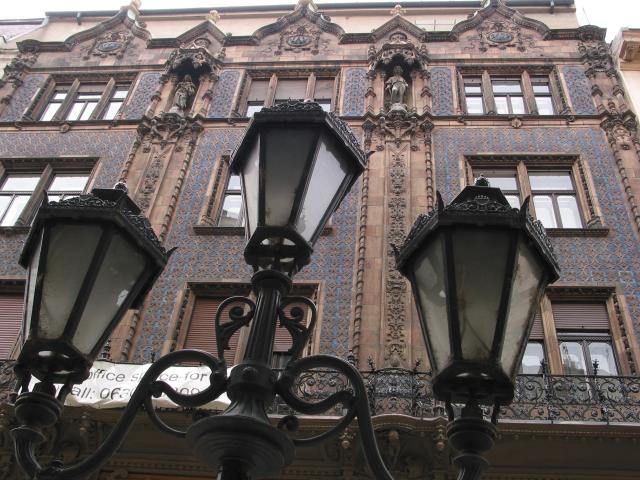 |
Street lamps and building...
probably (according to Karin) taken in one of the streets near
Vörösmarty Square, probably the main street called Váci
utca, which means it's in Pest too. |
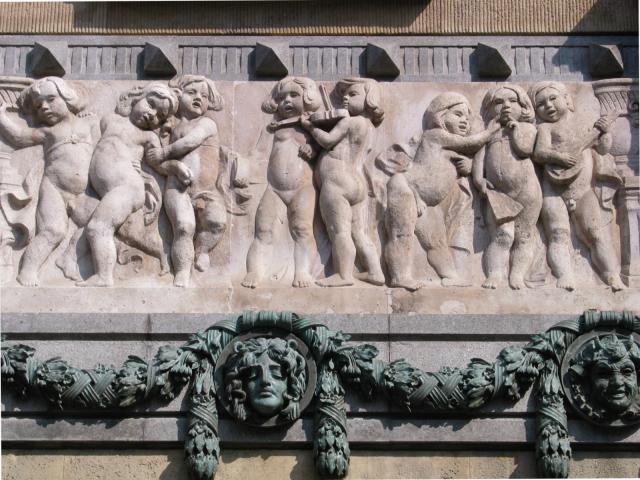 |
Outside the Liszt Academy, a
music school. Officially called the Ferenc Liszt College of Music Art,
it was founded in 1875. The Academy today not only trains musicians,
it's also the centre of concert life in Budapest. |
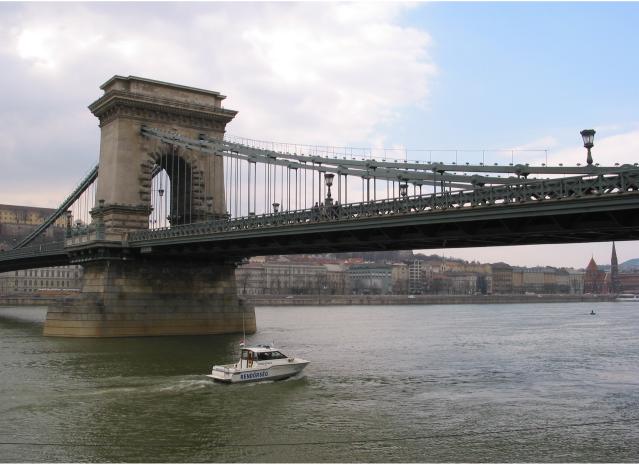 |
The Chain Bridge across the
Danube, with the hills of Buda behind it (taken from the Pest side of
the river).
This bridge was the first permanent span across the Danube.
Designed by an English engineer, Adam Clark (the
Square at the Buda end of the bridge is named after him),
and built between 1842 and 1849, one of its first
uses was to allow the Hungarian Army of Independence to retreat from the
advancing Austrians in 1849. The Austrians then tried to blow up the bridge
with explosives, but luckily the charges failed to detonate.
Sadly, almost 100 years later, the German army succeeded in collapsing the
centre span during fierce fighting towards the end of World War II. The
bridge was quickly rebuilt and has been periodically renovated (which makes
driving in Budapest an even greater chore as the bridge usually has to be
closed). |
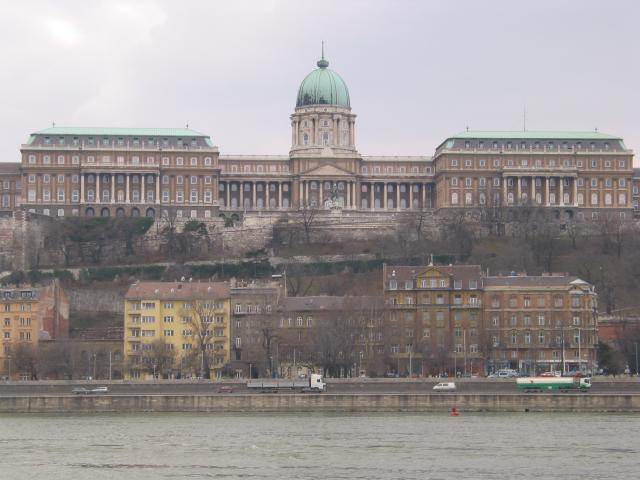 |
Old and new above the Danube:
This shows the Royal Castle, which was bombed during World War II and rebuilt.
In 1972 it was still a ruin and closed to the public.
But late in the seventies and for many years
the
reconstruction went on, giving us this view in 2003. |
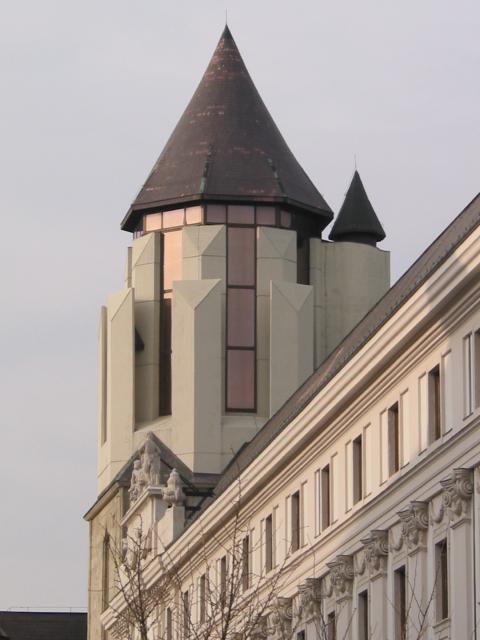 |
A new tower on Castle Hill, Buda:
the tower of the Hilton Hotel.
This was the first "foreign" hotel in Budapest, built close to the
very important old Mártyás church.
The Mártyás church (called Matthias Church in English)
is Hungary's gothic coronation church - the Matthias Church - as well as the
fairy-tale-like Fisherman's Bastion. Built some 25 years ago on the
site of a Dominican church and cloister of the 13th century, the hotel
incorporates the remnants of the old cloister and monastery that are
embraced by the present 20th century architecture. Thus the unique
blending of the two styles, modern and pre-Renaissance. |
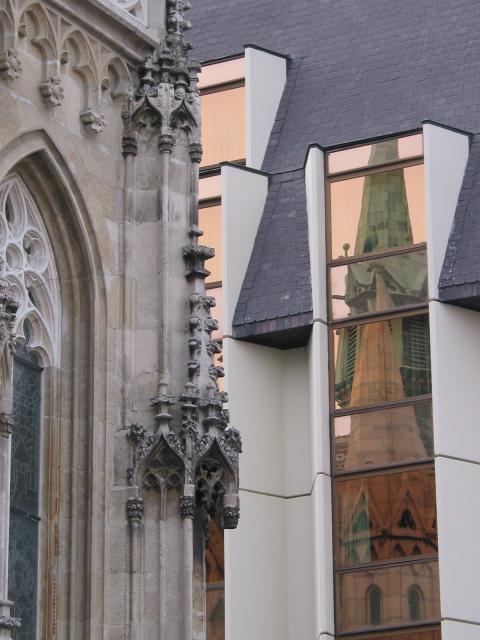 |
On Castle Hill:
the old Fisherman's Bastion mirrored in the new windows of the Hilton. |
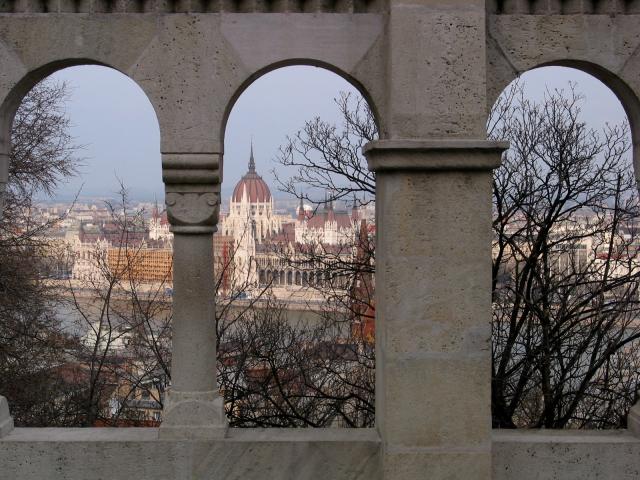 |
View of Pest, and the Parliament
building, from Castle Hill.
This view is from the above-mentioned Fisherman's Bastion, which was
completed in 1905 on the site of a former fish market - this is where
the name came from. It has never served a defensive purpose, but it is
an excellent lookout place. The floodlit row of bastions offer a
panoramic view onto the other bank of the Danube. The cityscape opening
up from there, including the Fishermen's Bastion, has been part of
UNESCO's World Heritage site since 1988. |
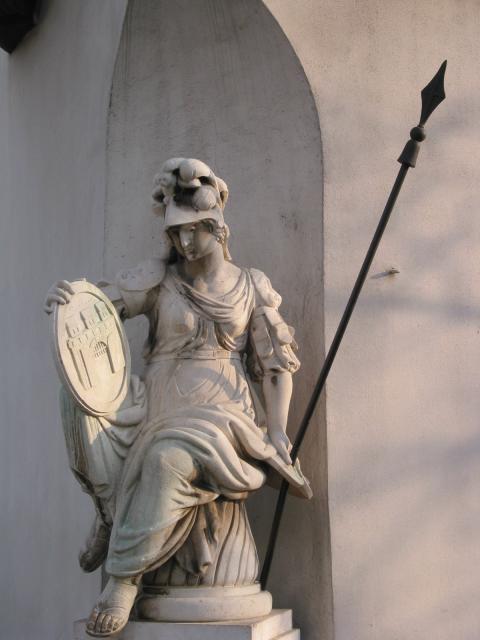 |
Corner of a building on Castle
Hill |
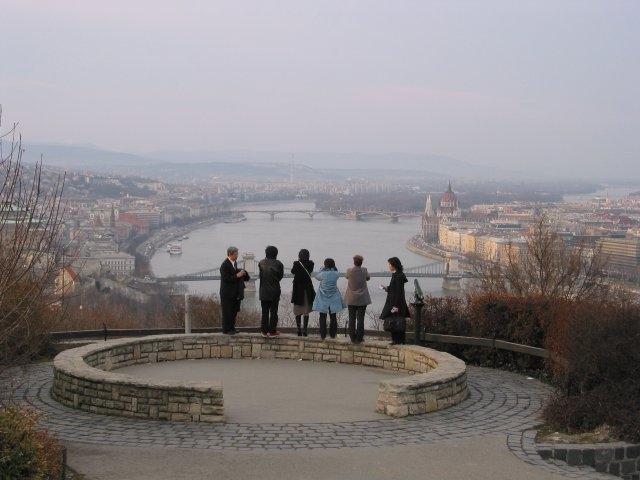 |
Taking in the view from the
Citadella: Buda (to the left), the Danube, and Pest |
[Previous page: Western Germany]
[Next page: Bratislava, Slovakia]
[Tour start: Central Europe, 2003]
[Tours]
(These photographs are Copyright © 2003 by Jerry Peek. Much higher-resolution versions of most images, and many other images too, are available at Jerry Peek Photography. Photos are available at reduced prices, or free, for non-commercial use.)